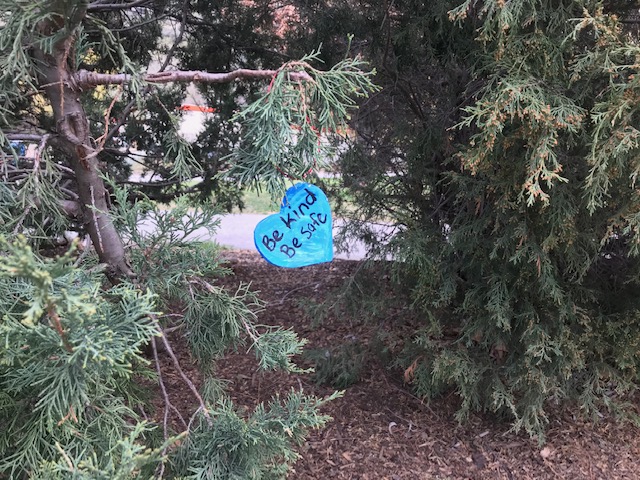
In Canada, new programs were suddenly in place for the unemployed and businesses. Schools closed, gatherings were progressively smaller. Everything was changed, reminding me that “normal” can dissipate overnight. I harbored a guilty thought—could world-on-pause be something good?
On March 17, 2020 the staff at our family practice clinic in Summerland, BC had a meeting. COVID had already killed thousands, shut down cities, closed businesses, cancelled travel, and emptied store shelves. Now, in our small town, patient visits would mostly be electronic—phone or “doxy.me”, and no one could enter the office for an in-person visit without calling first. Rooms were stripped and sanitized. Call schedules would shift to keep “hot” and “cold” providers separated.
Webinars and e-mails burgeoned with hygiene precautions and medical details on the disease. Old people were at highest risk. Uh-oh, that meant me, turning 70 years old this year. I was semi-retired and gradually extricating myself from a small constellation of responsibilities, but still helping out by doing “locums” for gaps in schedules. I looked at the office manager and, embarrassed to be mortal, suggested maybe I should just do virtual care. That was my last day of seeing a patient in the flesh.
As everything shut down, physicians put holidays were on hold, and no one wanted to see the doctor anyway, so my services were not needed in the office. My niche appeared through the local Division of Family Practice, working virtually with staff to support physicians doing long-term care. Daily and weekly phone calls and Zoom meetings filled our time, as we were waiting for the wave to hit. Preparing, learning everything we could about the virus, waiting, wondering, waiting. Waiting.
Borders closed, appalling news reports from the US and world overwhelmed. In Canada, new programs were suddenly in place for the unemployed and businesses. Schools closed, gatherings were progressively smaller. Everything was changed, reminding me that “normal” can dissipate overnight. I harbored a guilty thought—could world-on-pause be something good? A chance to learn that drastic change is required for survival in the face of other climate catastrophes in progress? I started studying . And still we were waiting, still strangely spared the worst.
Outdoors was declared good; UV light kills the virus. Our Provincial Health Officer reminded us, “Be kind, be calm, be safe.” We live by a city park, which was filled with families on bicycles, kids playing in the sand or the lake, sitting under the trees, having a picnic, doing the six-foot avoidance dance. Colorful, hand-painted rocks with cheery messages appeared nestled in bushes and trees. Without tourists, the daily dog walks became a promenade of locals along the lake where you were likely to see someone you knew, even if only at a distance. We went out at night to look at Comet Neowise, fading into the northern sky.
Happy surprise rock on the ground
In the long summer evenings, after the first nighthawks came out, we discovered a colony of bats flying out from the trees to feed on the insects over the lake. We returned, as the bats did, each evening. We timed and counted them–about a hundred bats over fifteen minutes, predictably just a little earlier each day, as the shadows fell with the season. Turtles shared the pond with the ducks and geese, beavers chewed down saplings, spent salmon washed up on the shore, eagles cruised. Fish from the sky appeared ectopically in the grass, along with owl pellets, deer and coyote scat, feathers and half-eaten mallards.
Vicious fires south of the border turned their skies thick and orange, and the smoke drifted north to us. This was still a mild fire season in BC, despite a few anxious days of watching our own fire, the mountain glowing red above the beach. Helicopters ferried crews up to the fire lines, and scooped water in long swinging buckets from the lake. Our bags were packed, in case.
I did a few more locums when requested, limited to phone consults, sitting at home typing into the electronic medical record while speaking awkwardly into my cellphone. It was exhausting, stressful and unsatisfying, and it seemed my “best by” date was upon me. This really would be the whimpering end of forty years of practice. I planned to let my license lapse come January. And I did.
Meanwhile, the news remained unbearable, with US elections, ongoing outrage at racial killings, and devastating COVID reports, all received with a sense of dissonance here in our valley–by fall there were a few COVID cases in our hospital, but still very few. Our “wave” was a gentle lap on the shore, if that, and was now ebbing. We continued to scan the horizon for the storm. Schools were open, as were most businesses, with masks and sanitizer and spacing and outdoor service. All travel plans had long been abandoned, but we gingerly ventured to the mountains for a few days. I learned the seduction of Sudoku. We updated wills and picked out a columbarium niche.
There were still no COVID cases in our local long-term care homes at all. Visitors had been severely limited, staff were reshuffled to work only at one site, and hygiene protocols were strict. Families and staff agonized over the trade-off of contact with loved ones for safety. Were we to be spared?
Then the winter surge began, and numbers started to creep up, even in our valley. An e-mail arrived on Saturday, December 5—someone had tested positive at a local care home. Then another site had positives, and others followed. Interior Health deployed daily Outbreak Management Team meetings for each site, in rapid-fire review, emergency-command style. Number of staff and residents positive? Number symptomatic? End of Life? Deaths? Protective equipment? Oxygen concentrators? Medications? Staffing needs? Reports from Infection control? Epidemiology? Medical Health Officer?
One of our care homes was devastated. Fifty out of fifty five residents and 23 staff tested positive; 17 residents died. Our Divisions committee instituted secondary meetings with physicians and nursing staff to make sure families were getting contacted, end of life care wishes updated, COVID care orders organized, regular reports made to physician offices. Nurses noted, with some relief, that the moribund slipped away gently with palliative meds. We blamed outdated multiple-bed rooms for the extent of the outbreak, and wrote letters to officials. The mobilization and constant contact provided some comfort. The solstice passed with families connected on Zoom.
By January, the light started to creep back. The Pfizer vaccine, painfully short of supply and with a demanding cold-chain, finally started to find its way to the long-term care homes and staff. The outbreaks were declared over before everyone was irretrievably burned out, and debriefings were held. The incessant daily meetings abated–but the wariness has not, for what lies ahead is uncertain. The past year of strangeness and danger lingers in everything.
Slowly, slowly more vaccines are on their way but still have to get into arms. The call for help has gone out to recently retired physicians and nurses. Maybe I’m not done yet.


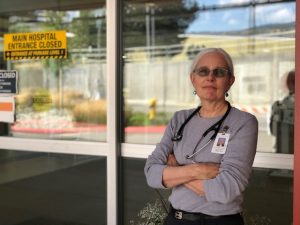
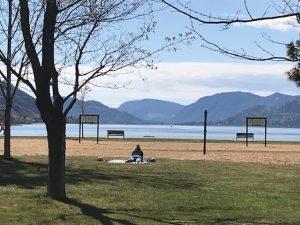
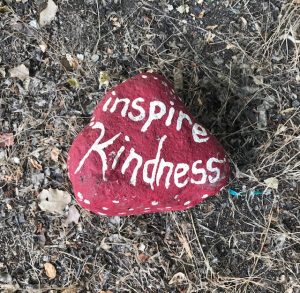

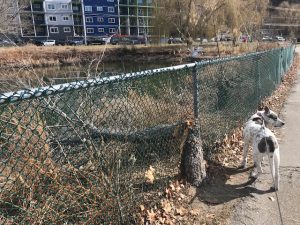
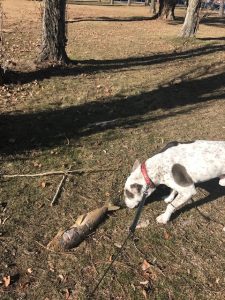
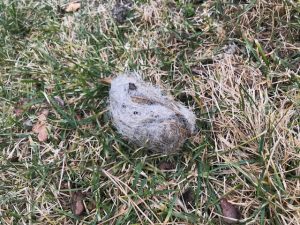
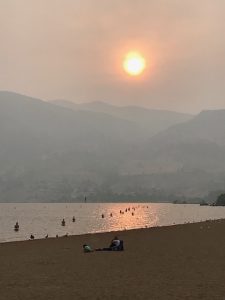
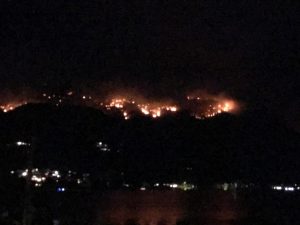
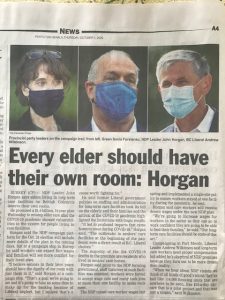

Thanx Khati for this beautifully written piece and for taking us inside your world and your work for the good, bless you!
So interesting to read the ebb and flow of the virus in your remote corner of Canada, Khati. It feels in some ways, it was handled better, yet perhaps not, since the care facility still had severe losses. You let us see this play out from a very personal and poetic point of view. Thank you for this.
This is a revealing account Khati, as a healthcare professional–the trauma and difficulty, balanced by what was going on in nature around you. Amazing story, and all of us are grateful to the physicians and everyone else who soldiered through the pandemic.
“Be kind, be calm, be safe” — perfect mantra to keep repeating. It was interesting to get an inside view of how medicine changed and how Canada managed things. I loved your pictures of nature, which is the only thing that seemed to thrive this past year.
The Provincial Health Officer who uses this mantra has become a minor celebrity. Public health relies on public trust. She wisely encourages us all to connect with nature, which is healing and teaches us what is important too.
Yes Laurie, nature thrived this year!
In New England the fall foliage was more breathtaking than any of us remembered. as if
Mother Nature was trying to comfort us!
Thanks for this excellent story, Khati, from your unique perspective as a doctor and a Canadian. Sounds like things were handled better there than in the US, although the deaths were still devastating. I love your wonderful photos illustrating the story so well. And what a great last sentence, “Maybe I’m not done yet.”
Thanks Suzy. The pandemic kind of shifted me into real retirement, and figuring out how not to be done in life in general paralleled the medical career part. And neither is really done yet I think. Retrospect has given me a nudge to reflect on many things long past, but also on more recent events, and writing has been therapeutic–thanks for encouraging participation.
Thank you, Khali, for this fascinating account of the last year in Canada. Many things the same as here, but not everything. And it is good to remember that Canada, though spared Trumpian craziness, did not always get the pandemic right either.
But, of course, the important thing for all of us — indeed, the whole world — is that we seem to be finally turning the corner. I hope we are all soon much safer, and that we have also learned and will remember some good lessons going forward. Hang in there!
For sure no one seems to have gotten things perfect on the pandemic, as if they could. My experience in the Okanagan Valley was different from other parts of BC or Canada as well. It is interesting to hear the personal stories to see how the particulars differ, but themes repeat–anxiety, uncertainty, upheaval, loss, separation, resilience, hope, interplay of other personal and political crises. May we all learn.
“The past year of strangeness and danger lingers in everything.” Indeed. I like the way you intertwined your personal and professional musings. There’s a quietude in your writing, even in the face of tragedy, that resonates. Beautifully written…thank you, Khati.
Thanks. Those kind words mean a lot coming from you.
This could be a very valuable narrative of the pandemic. I love the part where you focused on the wildlife and the natural surroundings. I hope, as I wrote to someone else, this won’t be simply viewed as a record of “that first pandemic.”
I hope as you do. But we know there will be new medical challenges as the climate and vectors shift, not to mention other natural disasters. The best to hope for is that we will learn how to change and adapt quickly. The know-how is there, but the emotional “let’s all pull together for the common good” is a challenge.